Thermal drones are unmanned aerial vehicles equipped with thermal cameras that detect infrared radiation to measure temperature differences in the environment. These drones are invaluable in applications where temperature variations are critical, such as industrial inspections, search and rescue, firefighting, and agricultural monitoring.
In this comprehensive guide, we explore the top 10 thermal drones of 2025, detailing their specifications, key features, pros and cons, and ideal usage scenarios. This information will help you make an informed decision when choosing the best thermal drone for your specific needs.
| Product | Thermal camera resolution | Thermal Sensitivity (NETD) | Max Flight Time |
|---|---|---|---|
| DJI Mavic 3T Enterprise | 640×512@30fps | ≤50 mK@F1.0 | 45 mins |
| Autel EVO Max 4T | 640*512 | - | 42 mins |
| DJI Matrice 30T | Infrared Image Super-resolution Mode: 1280×1024 Normal Mode: 640×512 | ≤50 mK@F1.0 | 41 mins |
| DJI Matrice 350 RTK | 640×512@30Hz (Zenmuse H20T) | ≤50 mK@f/1.0 (Zenmuse H20T) | 55 mins |
| Autel EVO II Dual 640T V3 | 640x512 25Hz | - | 38 mins |
| Autel Alpha | 640*512 | - | 40 mins |
| Yuneec Typhoon H520E-RTK | 320x256 (E10TX) 640x512 (E10TvX) | <50 mK @f/1.0 | 30 mins |
| Parrot ANAFI USA | 320x256 pixels | <50 mK (0.050°C) | 32 mins |
| Teledyne FLIR SIRAS | 640x512 pixels | - | 31 mins |
| Skydio X2E | 320x256 | - | 35 mins |
Below, we provide a detailed review of each product, including its specific parameters, features, advantages, and suitable applications.
What is a Thermal Drone?
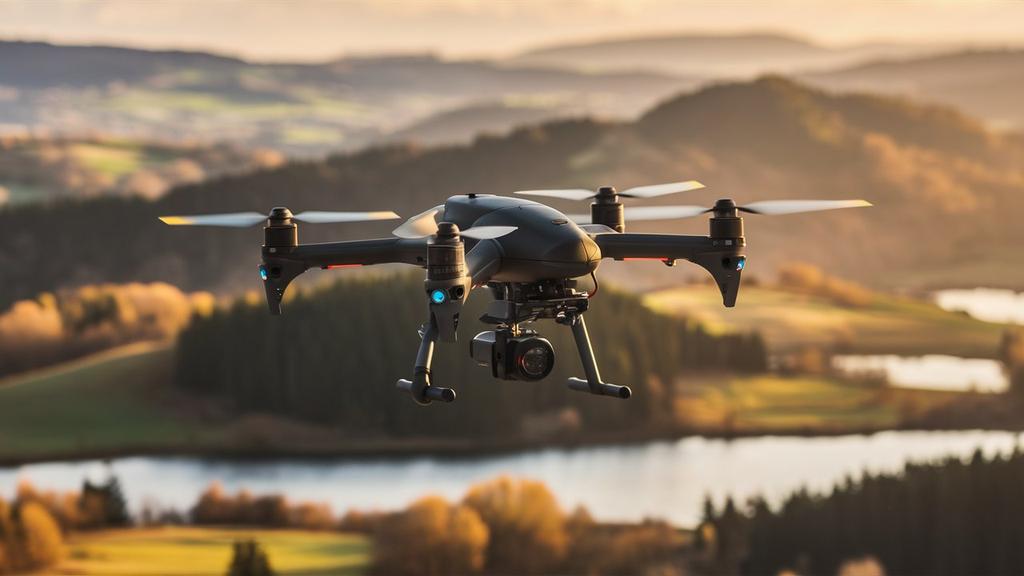
A thermal drone is an unmanned aerial vehicle (UAV) equipped with a thermal camera that detects infrared radiation (IR) to measure temperature differences in the environment. Unlike standard cameras that capture visible light, thermal cameras visualize heat signatures, which makes them useful in various applications where temperature variations are critical.
How Thermal Drones Work
Thermal drones operate by utilizing specialized lenses and sensors to detect and visualize infrared radiation (IR), which is emitted as heat by various objects. The process involves the following steps:
IR Detection: The thermal camera's lens captures IR radiation emitted by objects.
Thermal Sensor: This radiation is processed by a thermal sensor, usually a microbolometer, which measures temperature differences.
Image Processing: The sensor's data is converted into a visual format, displaying different temperatures in various colors (e.g., red for hot areas and blue for cold areas). Advanced image processing algorithms enhance the clarity and detail of the thermal images.
Data Transmission: The processed thermal images are transmitted to a ground control system where they can be monitored in real-time by the drone operator.
Thermal cameras are often mounted on a gimbal to stabilize the image and allow for comprehensive area coverage. The gimbal ensures that the camera remains steady and can rotate to capture a full 360-degree view, providing detailed and accurate thermal imaging from various angles.
Top 10 Thermal Drones of 2025
| Product | Thermal camera resolution | Thermal Sensitivity (NETD) | Max Flight Time | Max Transmission Range | Max Take-off Weight | Dimensions |
|---|---|---|---|---|---|---|
| DJI Mavic 3T Enterprise | 640×512@30fps | ≤50 mK@F1.0 | 45 mins | 15 km | 1.05 kg | Folded (without propellers): 221×96.3×90.3 mm (L×W×H) Unfolded (without propellers): 347.5×283×107.7 mm (L×W×H) |
| Autel EVO Max 4T | 640*512 | - | 42 mins | 20 km | 1.999 kg | Folded (without propellers): 340×407×148 mm (L×W×H) Unfolded (without propellers): 257×136×133 mm (L×W×H) |
| DJI Matrice 30T | Infrared Image Super-resolution Mode: 1280×1024 Normal Mode: 640×512 | ≤50 mK@F1.0 | 41 mins | 15 km | 4.069 kg | Folded: 365×215×195 mm (L×W×H) Unfolded (without propellers): 470×585×215 mm (L×W×H) |
| DJI Matrice 350 RTK | 640×512@30Hz (Zenmuse H20T) | ≤50 mK@f/1.0 (Zenmuse H20T) | 55 mins | 20 km | 9.2 kg | Folded (without propellers): 430×420×430 mm (L×W×H) Unfolded (without propellers): 810×670×430 mm (L×W×H) |
| Autel EVO II Dual 640T V3 | 640x512 25Hz | - | 38 mins | 15 km | 1.999 kg | Folded: 230×130×108 mm (L×W×H) Unfolded: 457×558×108 mm (L×W×H) |
| Autel Alpha | 640*512 | - | 40 mins | 20 km | 8.4 kg | Folded (without propellers): 780×568×278mm (L×W×H) Unfolded (without propellers): 455×263×245mm (L×W×H) |
| Yuneec Typhoon H520E-RTK | 320x256 (E10TX) 640x512 (E10TvX) | <50 mK @f/1.0 | 30 mins | 7 km | 1.86 kg | Diagonal Length: 520mm Dimensions: 551x482x309 mm |
| Parrot ANAFI USA | 320x256 pixels | <50 mK (0.050°C) | 32 mins | 4 km | 0.644 kg | Folded: 252×104×84 mm Unfolded: 282×373×82 mm |
| Teledyne FLIR SIRAS | 640x512 pixels | - | 31 mins | 3.2km | - | - |
| Skydio X2E | 320x256 | - | 35 mins | 6 km | - | Unfolded, FLYING: 660×560×200 mm Folded, no battery: 300×150×100 mm |
1. DJI Mavic 3T Enterprise
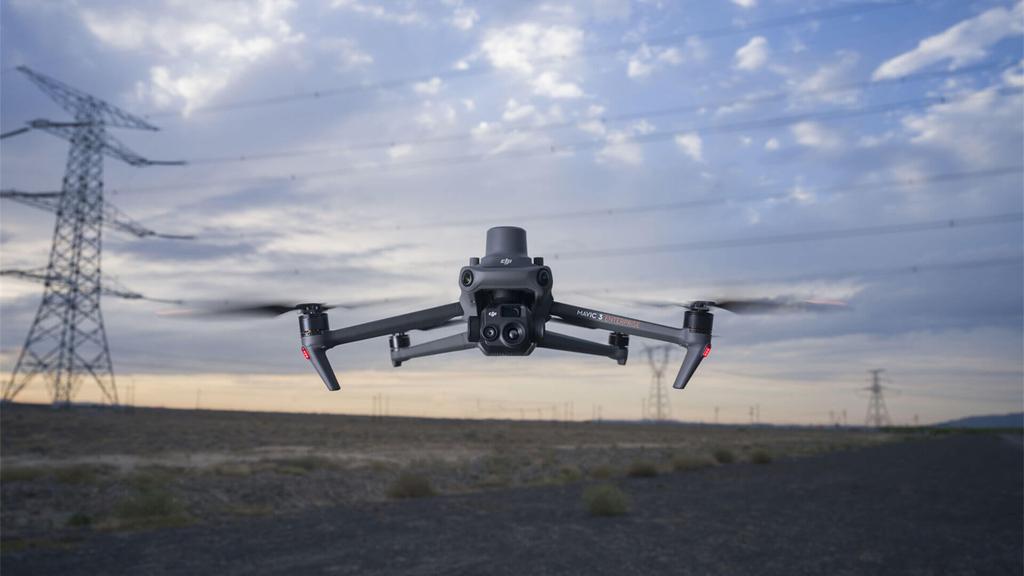
Image source: dji.com. Please contact us for removal in case of any infringement.
The DJI Mavic 3T Enterprise is a compact, foldable drone equipped with advanced thermal imaging capabilities, making it an indispensable tool for industrial and commercial applications. It features a high-frequency thermal camera, a wide-angle camera, and a telephoto camera, providing a comprehensive imaging solution. The drone's thermal camera has a resolution of 640×512 and can operate in two gain modes, catering to a wide range of temperatures, which is particularly useful for tasks such as infrastructure inspection, search and rescue, and environmental monitoring.
The Mavic 3T shares many physical attributes with the Mavic 3E, including the same flight performance and the DJI Pilot 2 app, which enhances the user experience with intuitive controls and advanced flight planning. However, the Mavic 3T is distinct in its thermal imaging capability, which allows for precise temperature measurement and thermal mapping. While this limits its photogrammetry potential compared to the Mavic 3E, the Mavic 3T excels in applications where thermal imaging is crucial.
Pros and Cons
| Pros | Cons |
|---|---|
| High-Frequency Thermal Camera: Provides detailed thermal imaging for accurate analysis. | Potential for Feature Confusion: Overlapping functionalities with other DJI drones. |
| Side-by-Side Thermal Operation: Easy to switch and compare thermal and RGB images. | Lower Image Quality Compared to Mavic 3E: Smaller sensor in the wide camera. |
| Pro Controller with User-Defined Buttons: Enhances customization and control. | No IP Rating: Not suitable for use in wet or harsh weather conditions. |
| Robust Feature Set: Includes thermal maps, advanced flight planning, and thermal 3D models. | Limited to RGB and Thermal Imaging: Lacks lidar capability for advanced surveying tasks. |
| Compact and Portable Design: Easy to transport, with folding legs and secure battery attachment. | Slightly Complicated Setup: Requires additional equipment like the RTK module for accuracy. |
| Improved Flight Performance: Enhanced wind resistance and operating temperature range. |
2. Autel EVO Max 4T
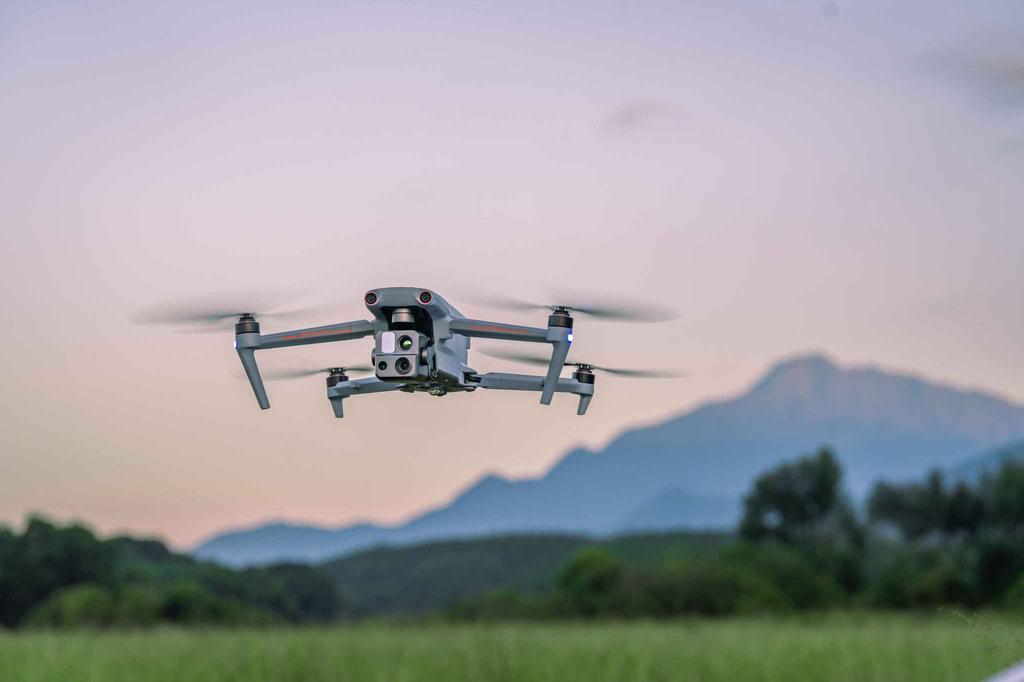
Image source: autelrobotics.com. Please contact us for removal in case of any infringement.
The Autel EVO Max 4T is a highly advanced enterprise drone designed for professional applications such as emergency services, search and rescue, and aerial surveying. It stands out with its combination of three cameras: a wide-angle, a zoom, and a thermal camera, along with a laser rangefinder. The drone is equipped with advanced obstacle avoidance, robust anti-interference technologies, and impressive mapping functionalities. Its IP43 rating ensures durability in various weather conditions, making it a reliable choice for critical operations. While it appears complex initially, its intuitive controls and comprehensive features make it a powerful tool once mastered.
Pros and Cons
| Pros | Cons |
|---|---|
| Multiple Cameras: Equipped with wide-angle, zoom, and thermal cameras for versatile imaging. | Initial Complexity: Appears complicated and requires time to learn the controls and features. |
| Advanced Obstacle Avoidance: Combines binocular vision and millimeter wave radar for precise detection. | Limited Battery: Only one battery included in the kit, necessitating additional purchases for extended use. |
| Robust Mapping Functionality: Supports various mission planning types and real-time 3D flight path creation. | High Cost: Expensive, making it suitable primarily for professional and enterprise use. |
| Durable and Weather-Resistant: IP43 rating for dust and water resistance, suitable for harsh environments. | Non-Intuitive Initial Setup: Setting up missions and accessing features is not immediately obvious. |
| Accurate Object Identification and Tracking: AI-based recognition for tracking heat sources, people, and vehicles. | |
| Anti-Jam and Anti-Interference Technologies: Effective in complex areas with RFI, EMI, and GPS spoofing. | |
| Enhanced Flight Performance: Good wind resistance, long transmission range, and extended flight time. |
The Autel EVO Max 4T excels in professional scenarios requiring advanced imaging and mapping capabilities, making it a top choice for emergency services, search and rescue missions, and industrial inspections. Despite its initial complexity and high cost, its extensive feature set and robust performance make it a valuable asset for enterprise users.
3. DJI Matrice 30T
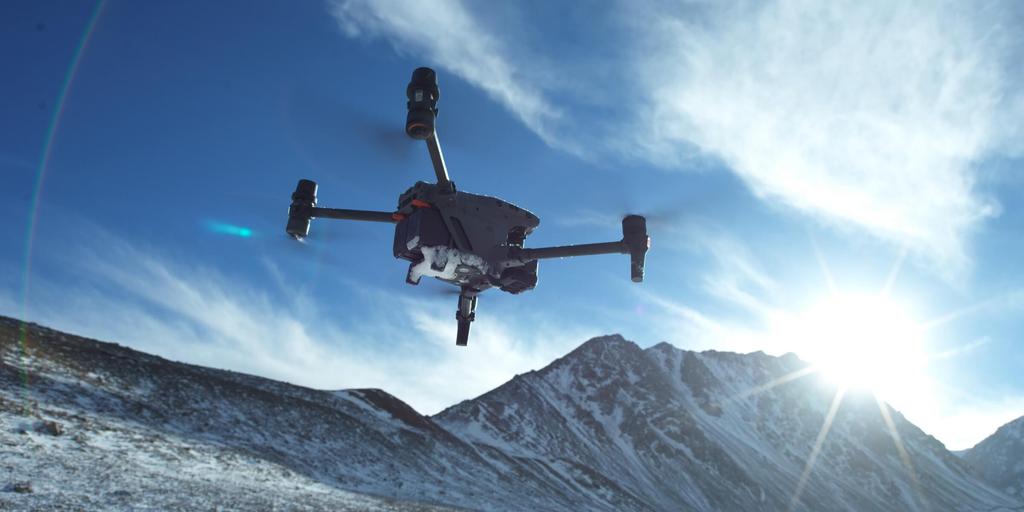
The DJI Matrice 30T is an advanced enterprise drone designed to meet the demanding needs of industrial inspections, search and rescue missions, and other critical applications. It features a versatile payload with a wide-angle camera, a 48MP zoom camera, a thermal camera, and a laser rangefinder. The M30T offers a compact, foldable design that is more portable than its predecessors while maintaining high performance. Its robust build and advanced software capabilities, including autonomous flight modes and intelligent battery management, make it a reliable choice for professionals.
The drone excels in various conditions, thanks to its IP55 rating and ability to operate in temperatures ranging from -20° to 50°C. The new RC Plus controller enhances user experience with its large, bright screen and customizable buttons, ensuring efficient and intuitive operation even in challenging environments. Despite some minor limitations, the DJI Matrice 30T stands out as a powerful, versatile, and user-friendly enterprise drone.
Pros and Cons
| Pros | Cons |
|---|---|
| Versatile Camera Payload: Includes wide-angle, zoom, thermal cameras, and a laser rangefinder. | High Cost: The advanced features come with a significant price tag. |
| Compact and Portable Design: Foldable and easy to transport, suitable for quick deployment. | Limited Intelligent Flight Features: Some advanced flight features are not available. |
| Robust Build and Weather Resistance: IP55 rating, can operate in extreme temperatures and conditions. | Battery Life: Flight time can be shorter in adverse weather conditions. |
| Advanced Software Capabilities: Supports autonomous flight modes and intelligent battery management. | Complex Setup for Beginners: May require a learning curve for new users. |
| High-Resolution Zoom and Thermal Imaging: Excellent for detailed inspections and identifying heat anomalies. | Noise Levels: The drone can be relatively noisy during operation. |
| Enhanced User Experience with RC Plus Controller: Large screen and customizable buttons for ease of use. | Fixed Payload: Unlike some models, the payload is fixed and cannot be changed. |
4. DJI Matrice 350 RTK
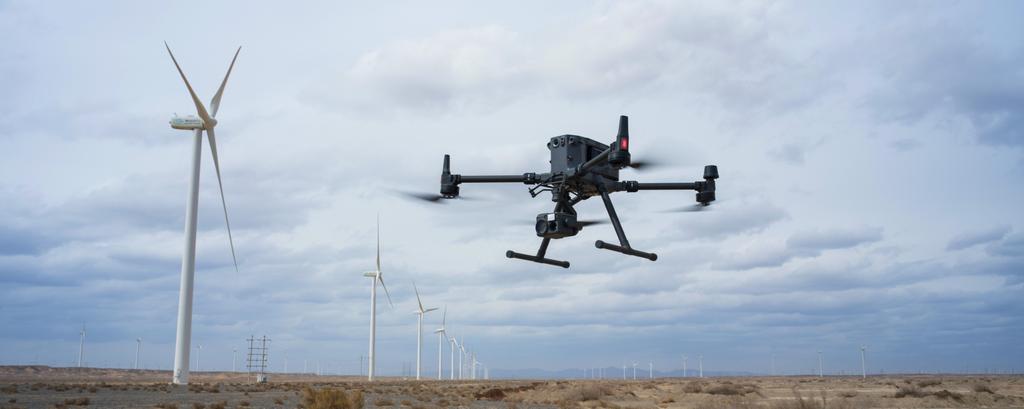
The DJI Matrice 350 RTK is a significant upgrade from its predecessor, the Matrice 300 RTK, enhancing performance, reliability, and versatility for professional applications. It features the DJI O3 Enterprise Transmission system, offering improved stability and a transmission range of up to 20 kilometers. The drone supports a wide range of payloads, including DJI’s Zenmuse cameras and custom third-party sensors, and remains backward compatible with Matrice 300 RTK payloads like the H20, H20T, H20N, P1, and L1.
The new TB65 batteries provide better thermal management, up to 400 charge cycles, extended flight times, and hot-swapping capabilities. Its IP55 rating ensures durability in various weather conditions, outperforming the Matrice 300 RTK's IP45 rating. Additional features include an arm lock sensor for enhanced safety and an upgraded FPV camera with improved night vision capabilities, making the Matrice 350 RTK a reliable and powerful tool for demanding professional applications.
Pros and Cons
| Pros | Cons |
|---|---|
| Advanced Transmission System: DJI O3 Enterprise Transmission offers stable connection and up to 20 km range. | High Cost: Expensive, primarily suited for enterprise users with significant budgets. |
| Enhanced Battery System: Dual-battery system with hot-swapping and long flight times (up to 55 minutes). | Weight: Heavier compared to some competitors, which might affect portability. |
| Versatile Payload Options: Supports Zenmuse cameras, third-party sensors, and is backward compatible with Matrice 300 RTK payloads. | Complex Setup: Requires detailed setup and training for optimal use. |
| Robust Build and Weather Resistance: IP55 rating allows operation in harsh weather conditions. | Battery Charging Time: Longer charging times may impact quick turnaround requirements. |
| Intelligent Features: Automated flight paths, high-precision mapping, and smart oblique capture. | Not for Hobbyists: Designed specifically for professional and industrial use cases. |
| Comprehensive Safety Features: Six-directional obstacle sensing and advanced safety systems. | Limited Compatibility: Some new features and payloads may not be backward compatible with older models. |
| Night-Vision FPV Camera: Enhances visibility and safety during night operations. |
5. Autel EVO II Dual 640T V3
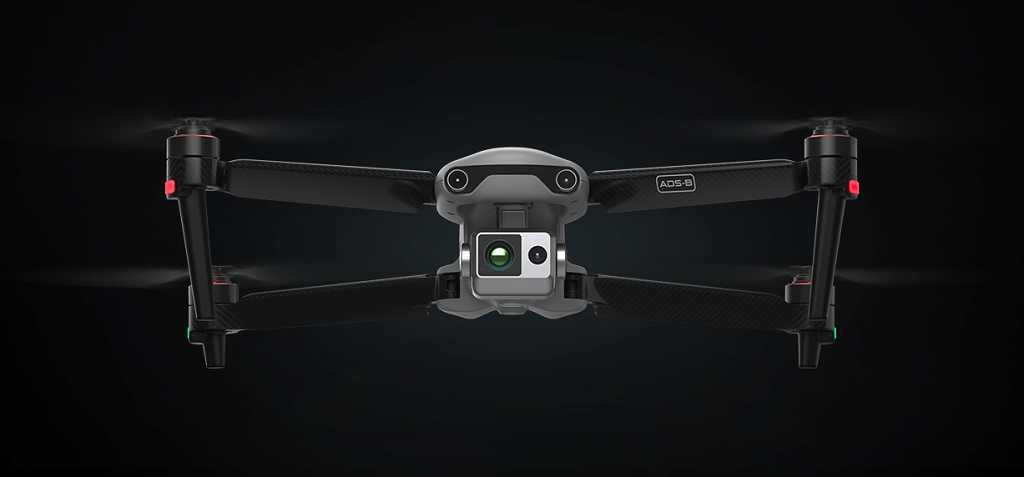
The Autel EVO II Dual 640T V3 is a high-performance thermal drone designed for various professional applications, including industrial inspections, search and rescue, and wildlife monitoring. It features a dual-camera system with a 640×512 thermal camera and a 50MP visual camera, enabling detailed and accurate imaging in diverse conditions. The drone's advanced SkyLink 2.0 video transmission technology offers a range of up to 15 kilometers, and its powerful battery allows for a maximum flight time of 38 minutes. The 7.9" Smart Controller V3 enhances user control and functionality.
Pros and Cons
| Pros | Cons |
|---|---|
| Dual-Camera System: 640×512 thermal camera and 50MP visual camera for detailed imaging. | High Cost: Expensive, making it a significant investment for many users. |
| Long Flight Range: SkyLink 2.0 video transmission with up to 15 kilometers range. | Weight: 1150g takeoff weight, which might affect portability for some users. |
| Advanced Transmission: Reliable and stable connection with anti-interference capabilities. | Battery Life: The 38-minute maximum flight time may be limiting for some missions. |
| Smart Controller: 7.9-inch android touchscreen with 2000 nit brightness. | Complex Setup: May require a learning curve for optimal use. |
| High-Resolution Imaging: 50MP visual camera with RYYB sensor and Moonlight Algorithm 2.0. | |
| Versatile Applications: Suitable for industrial inspections, search and rescue, and wildlife monitoring. | |
| Durable Build: Rugged design suitable for challenging environments. | |
| 360° Obstacle Avoidance: AI/Machine Learning enabled collision avoidance system. |
6. Autel Alpha
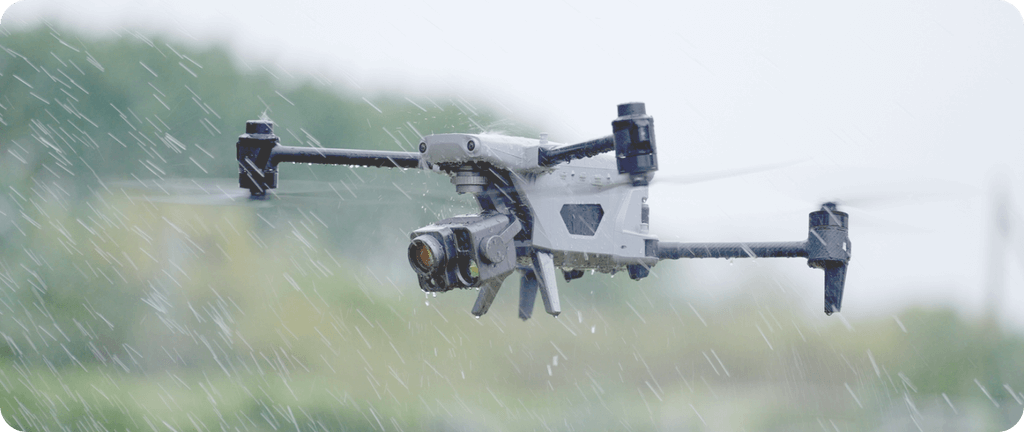
The Autel Alpha is an advanced industrial drone designed for professional applications such as public safety, energy inspections, and emergency management. It features a robust design with an IP55 rating, making it suitable for harsh environments. The drone is equipped with the Autel DG-L35T gimbal, integrating dual thermal cameras (short and long focal length), a 4K 35x night vision zoom camera with up to 560x digital zoom, a 48MP wide-angle camera, and a laser rangefinder. These features provide comprehensive solutions for various industrial tasks.
The Alpha also boasts impressive anti-interference capabilities, including GNSS anti-jamming and anti-spoofing, adaptive frequency hopping technology, and GNSS visual navigation (GPS, GLONASS, BeiDou, Galileo). Additionally, it includes the A-Mesh networking technology for autonomous communication and collaboration between drones, enhancing operational efficiency.
The drone offers a maximum flight time of 45 minutes and features 720° omnidirectional obstacle avoidance for enhanced safety. These advanced capabilities make the Autel Alpha a versatile and powerful tool for a wide range of industrial applications.
Pros and Cons
| Pros | Cons |
|---|---|
| Comprehensive Camera System: Dual thermal cameras, night vision zoom camera, and laser rangefinder. | High Cost: Expensive, making it a significant investment for many users. |
| Robust Design: IP55 rating for harsh environments and high durability. | Weight: Heavier compared to some competitors, affecting portability. |
| Advanced Anti-Interference: Adaptive frequency hopping and GNSS visual navigation. | Complex Setup: Requires detailed setup and training for optimal use. |
| Autonomous Capabilities: Global path planning, 3D scene reconstruction, and obstacle avoidance. | Battery Life: The 45-minute flight time may still be limiting for some missions. |
| A-Mesh Networking: Enables multi-device networking and autonomous communication. | Limited Payload Options: May have fewer payload options compared to some competitors. |
| 720° Obstacle Avoidance: Comprehensive sensing and obstacle avoidance capabilities. | App Compatibility: Limited support for some mobile devices, affecting user experience. |
7. Yuneec Typhoon H520E-RTK
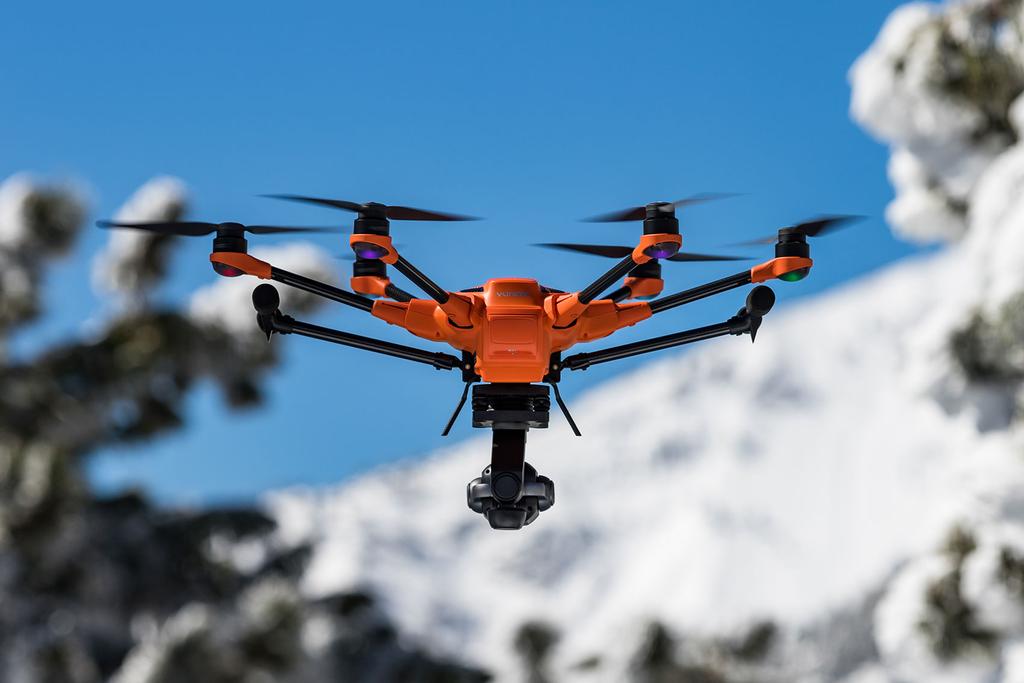
Image source: yuneec.online. Please contact us for removal in case of any infringement.
The Yuneec Typhoon H520E-RTK is a versatile and robust hexacopter designed for professional use, particularly in industrial inspection, public safety, and video production. It features hot-swappable camera options and an integrated 7-inch Android touch screen controller (ST16E Ground Station). The H520E-RTK offers a flight time of 25-30 minutes under optimal conditions and provides precise navigation with RTK (Real-Time Kinematic) technology for enhanced accuracy. Its comprehensive data security ensures that all data remains with the user, without being transferred to remote servers. Additionally, the drone's closed system design prevents any involuntary data transfer to external servers.
Pros and Cons
| Pros | Cons |
|---|---|
| Hot-Swappable Cameras: Facilitates quick changes between different camera payloads. | Large Controller: The 7-inch screen controller may require some adaptation for users. |
| RTK Precision: Enhanced positioning accuracy for detailed mapping and inspection tasks. | Shorter Transmission Range: Up to 1.6 km, less than some competitors. |
| Data Security: Ensures no data transfer to remote servers, keeping data secure. | High Cost: Relatively expensive, with each camera and accessory adding to the cost. |
| Integrated Ground Station: 7-inch screen with mission planning and real-time data display. | Limited Operating Temperature: Suitable for temperatures between 0°C and 40°C. |
| Comprehensive Use Cases: Suitable for industrial inspection, public safety, and video production. | Flight Time: 25-30 minutes under optimal conditions, may vary with payload and environment. |
8. Parrot ANAFI USA
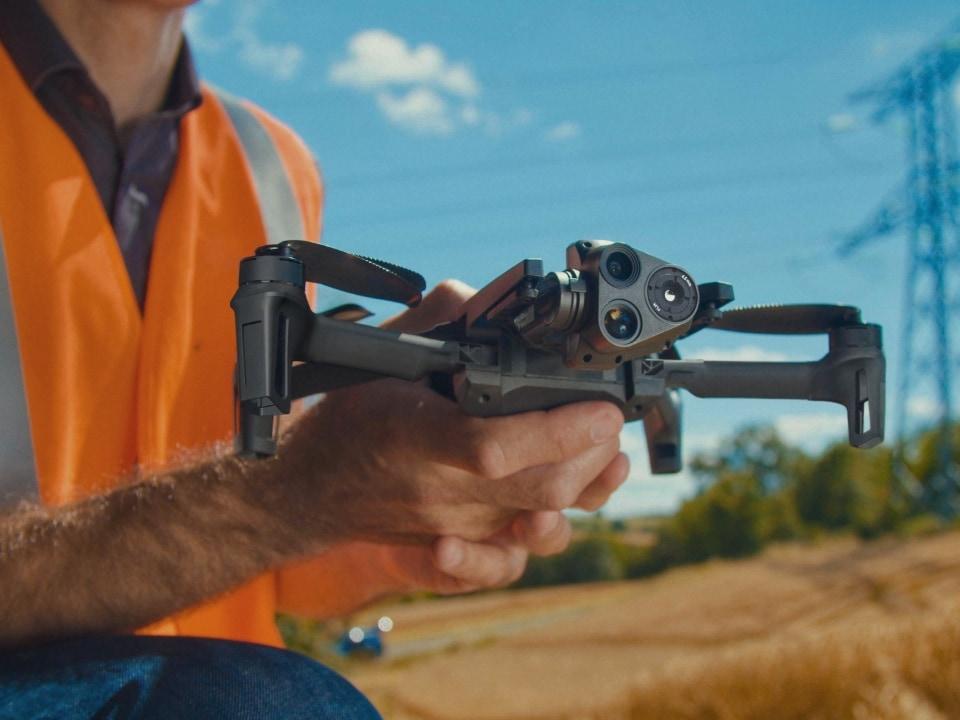
Image source: parrot.com. Please contact us for removal in case of any infringement.
The Parrot ANAFI USA is a high-performance drone manufactured in the USA for professional applications, particularly in public safety and defense. It features a triple camera system with dual 21-megapixel cameras, 32x digital zoom, and a FLIR Boson thermal camera, making it ideal for search and rescue, inspection, and surveillance missions. Lightweight and foldable, the drone can be deployed in less than 55 seconds and offers up to 32 minutes of flight time.
Security and durability are key features of the ANAFI USA. It employs AES-XTS encryption and secure data transmission protocols to protect sensitive information. The drone's IP53 rating ensures dust and water resistance, enhancing its reliability in challenging environments. These features, combined with its advanced imaging capabilities, make the ANAFI USA a versatile tool for various professional applications.
Pros and Cons
| Pros | Cons |
|---|---|
| Advanced Imaging: Dual 21MP cameras with 32x zoom and FLIR thermal camera. | Price: High-end pricing may be a barrier for some users. |
| Data Security: AES-XTS encryption and secure data transmission. | Regulatory Compliance: Lacks CE marking, potentially affecting use in certain regions. |
| Ease of Deployment: Ready to fly in under 55 seconds. | Weight: At 500g, it's heavier than some competitors in its class. |
| Durability: IP53 rating for dust and rain resistance. | |
| Quiet Operation: Low noise level of 79 dB at 50cm. | |
| Extended Flight Time: Three batteries included for up to 1.5 hours of total flight time. |
9. Teledyne FLIR SIRAS
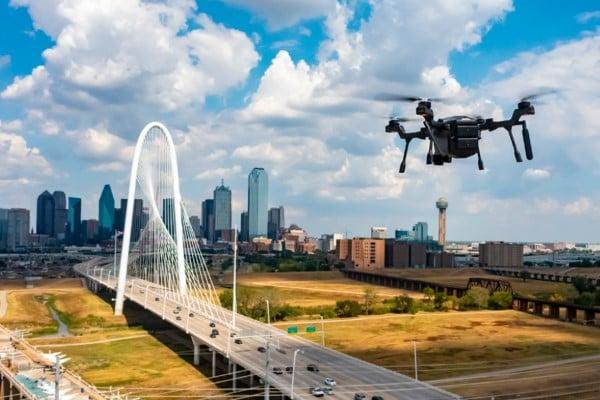
Image source: flir.com. Please contact us for removal in case of any infringement.
The Teledyne FLIR SIRAS is a professional-grade drone designed for industrial and public safety applications. This drone features a 16MP visible camera and a 640x512-pixel FLIR Boson thermal camera, making it suitable for various critical missions. With no restrictive geofencing, it can be quickly deployed for urgent tasks, enhancing its operational efficiency. The SIRAS emphasizes data security by storing imagery on an onboard microSD card without cloud connectivity.
Pros and Cons
| Pros | Cons |
|---|---|
| Advanced Imaging: 16MP visible camera with 128x zoom and FLIR Boson thermal camera. | High Cost: Priced around $9,760, which may be expensive for some users. |
| Data Security: Imagery stored on an onboard microSD card with no cloud connectivity. | Battery Latch Issue: The battery latch can be a potential failure point. |
| Interchangeable Payload: Allows for future upgrades and mission-specific payloads. | Flight Characteristics: Requires careful handling during landing to avoid high-speed descent. |
| Durable Design: IP54 rating for dust and water resistance. | Non-Universal Battery: Battery has a designated top and bottom, complicating handling. |
| Ease of Deployment: Ready to fly within two minutes of power on. | Controller Charging: Cannot charge the remote controller battery while flying. |
| Long Flight Time: Up to 31 minutes of flight time with hot-swappable batteries. | Heavy Weight: Weighs 3.1 kg (6.8 lb), affecting portability. |
| No Geofencing: Allows for unrestricted flight operations. |
10. Skydio X2E
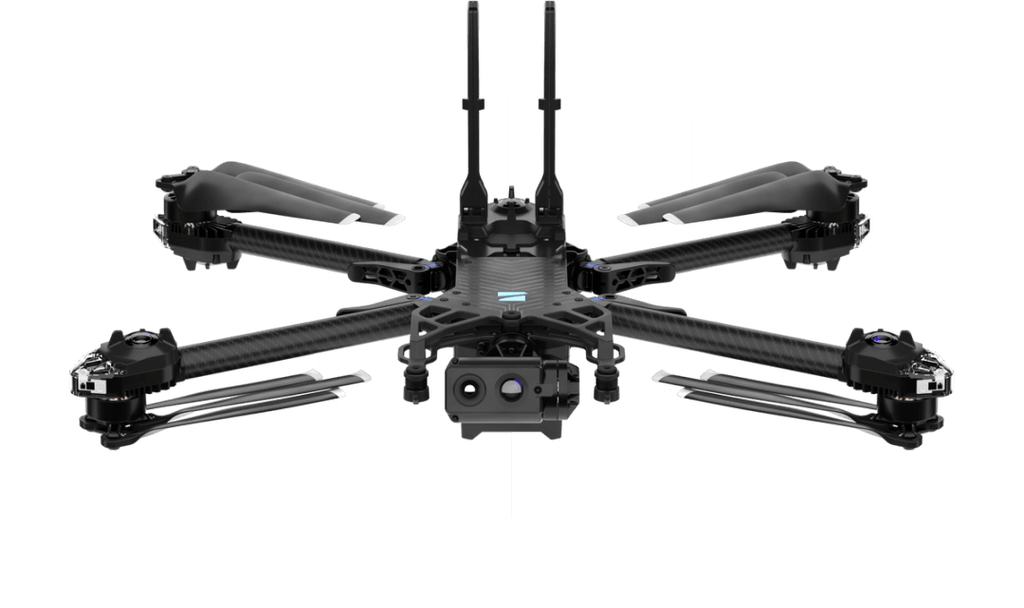
Image source: skydio.com. Please contact us for removal in case of any infringement.
The Skydio X2E is a state-of-the-art drone designed for professional use in sectors such as public safety, defense, and industrial inspection. This rugged and portable drone is equipped with Skydio's advanced autonomy engine, allowing for unparalleled 360° obstacle avoidance and autonomous flight capabilities. It features a dual sensor payload with a 12MP color camera and a FLIR Boson 320x256 thermal camera, making it highly versatile for various operational needs. The Skydio X2E offers up to 35 minutes of flight time and is designed to operate efficiently in day and night conditions, with GPS-based night flight and strobing lights for enhanced visibility. Its ruggedized construction and foldable design make it both durable and easily transportable for field operations.
Pros and Cons
| Pros | Cons |
|---|---|
| Advanced Autonomy: 360° obstacle avoidance and autonomous flight powered by AI. | High Cost: Expensive, primarily suited for enterprise and government users. |
| Dual Sensor Payload: 12MP color camera and FLIR Boson thermal camera. | Complex Setup: Requires training to fully utilize advanced features. |
| Durable Design: Rugged construction with magnesium and carbon fiber composites. | Limited Payload Options: Payloads are specific to the model and not widely interchangeable. |
| Ease of Deployment: Ready to fly within 75 seconds of power on. | Controller Issues: Reports of occasional connectivity problems with the controller. |
| Long Flight Time: Up to 35 minutes of flight time. | |
| No Geofencing: Allows for unrestricted flight operations. | |
| Night Operations: Equipped with strobing lights for night visibility. |
T-DRONES Flight Platforms with Compatible Thermal Camera Options
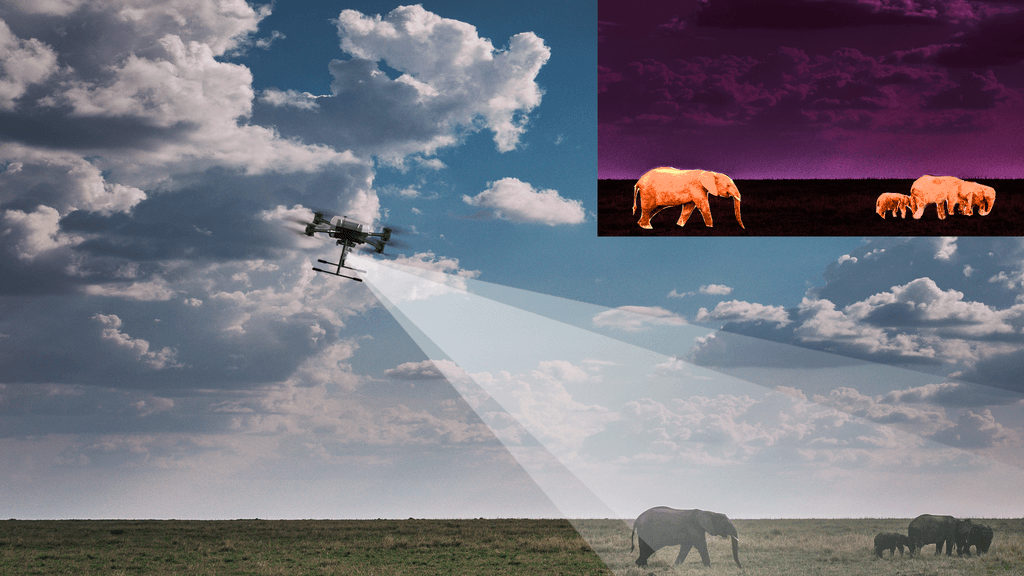
T-DRONES flight platforms are versatile and can be equipped with popular thermal cameras on the market. These platforms offer flexibility and cost-effectiveness, allowing users to choose the best thermal camera based on their specific needs. Below are some popular models that are compatible with various thermal cameras:
| Product | Max Flight Time | Max Control Range | Max Payload | Dimensions | Max Take-off Weight | Max Speed |
|---|---|---|---|---|---|---|
| T-DRONES M690Pro | 89 minutes | 30 km | 2 kg | Unfolded (without propellers): 550×550×445mm Folded (without propellers): 283×278×175mm | 6 kg | 54 km/h |
| T-DRONES VA23 | 240 minutes | 30 km | 2.5kg | Frame Length: 1250mm Wingspan: 2300mm | 12.5kg | 126km/h |
| T-DRONES M1200 | 107 minutes | 30 km | 5 kg | Folded: 585×585×570mm Unfolded: 990×1005×570mm | 18.5 kg | 54 km/h |
How to Choose the Best Thermal Drone
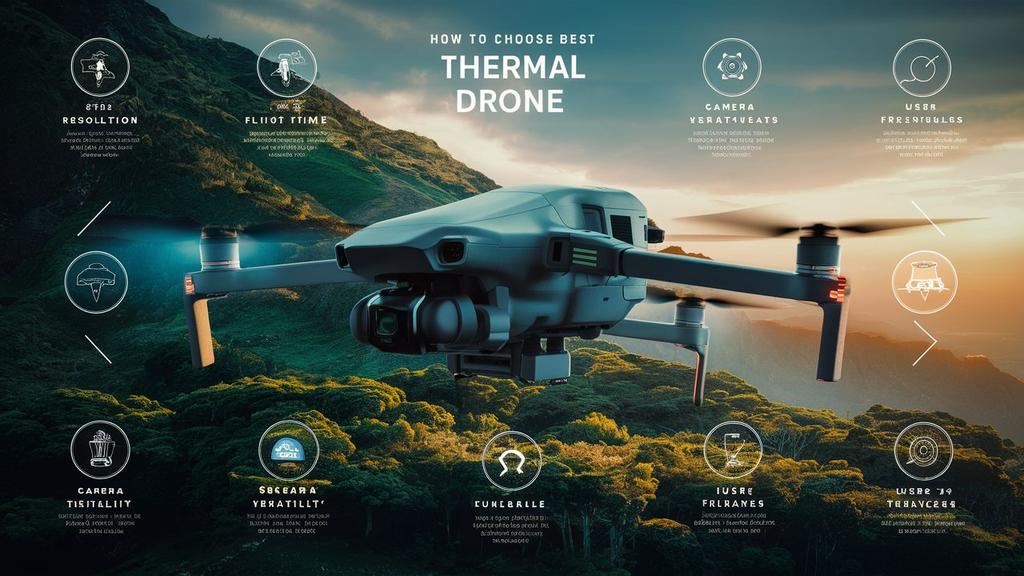
Choosing the best thermal drone for your needs requires careful consideration of several key factors. Here are the main aspects to evaluate:
Sensor Resolution
Importance: The resolution of the thermal sensor determines the clarity and detail of the images. Higher resolution allows you to see smaller temperature differences and more precise details.
Recommendation: For most professional applications, a resolution of 640×512 pixels is ideal. However, for less demanding tasks, lower resolutions like 320×240 pixels might suffice and can be more cost-effective.
Thermal Sensitivity
Importance: Thermal sensitivity, often measured in millikelvins (mK), indicates how well the sensor can detect small temperature differences. Lower values represent higher sensitivity.
Recommendation: Look for drones with a thermal sensitivity (NETD) below 50 mK for the best performance in detecting subtle temperature variations.
Image Processing Capabilities
Importance: Advanced image processing features can significantly enhance the usability of thermal images. Features like picture-in-picture (PIP) and Multi-Spectral Dynamic Imaging (MSX) can provide better context and clarity.
Recommendation: Choose a drone that offers robust image processing modes, such as PIP for blending thermal and visual images, and MSX for overlaying visual details on thermal images.
Flight Time and Battery Life
Importance: Longer flight times are crucial for covering large areas and conducting thorough inspections without frequent battery changes.
Recommendation: Drones with flight times of 30 minutes or more are preferable for most professional applications. Consider drones with hot-swappable batteries for extended operations.
Control Range
Importance: The control range determines how far you can operate the drone from the controller. A longer range allows for greater operational flexibility and safety.
Recommendation: Look for drones with a control range of at least 5 kilometers, although professional models often offer much more.
Build Quality and Weather Resistance
Importance: Drones used in industrial or challenging environments need to withstand harsh conditions.
Recommendation: Choose drones with an Ingress Protection (IP) rating for weather resistance, and robust build quality to ensure durability.
Ease of Use
Importance: User-friendly controls and intuitive interfaces can significantly reduce the learning curve and improve efficiency.
Recommendation: Choose drones with comprehensive training resources, intuitive control systems, and good customer support.
Cost and Value
Importance: The cost of the drone should be justified by its features and performance. It's essential to balance your budget with the capabilities you need.
Recommendation: Evaluate the return on investment (ROI) by considering how the drone's features will meet your specific needs and improve your operations.
What Are Thermal Drones Used For?
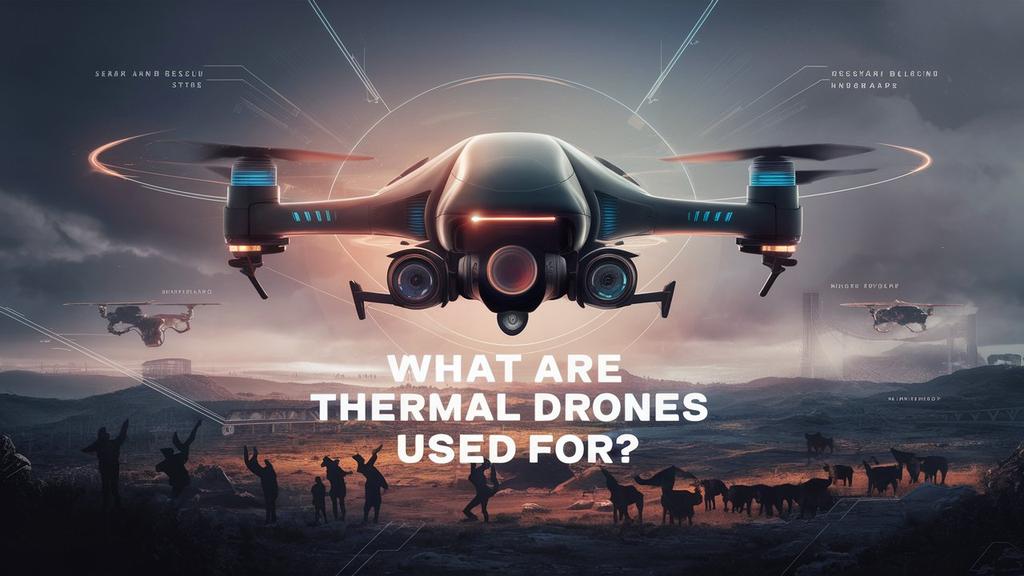
Thermal drones are utilized across a variety of industries due to their ability to detect and visualize heat signatures. Here are some of the most common applications:
Search and Rescue
Thermal drones are invaluable in search and rescue operations. They can quickly identify heat signatures from people or animals, even in dense forests or snow-covered areas, significantly improving the chances of locating missing persons.
Agriculture
In agriculture, thermal drones are used to monitor crop health, detect irrigation needs, and identify pest infestations. They can pinpoint areas that require water or are affected by pests, allowing for targeted interventions and better crop management.
Electrical Inspections
Thermal drones are employed to inspect electrical installations, such as power stations and power lines. They can detect overheating components, identify areas prone to wear and tear, and predict maintenance needs, thereby preventing potential failures and reducing downtime.
Building Inspections
Thermal drones can be used for building inspections to detect insulation issues, potential leaks, and structural problems. This is particularly useful in real estate transactions, as it provides a comprehensive assessment of a property before purchase.
Firefighting
In firefighting, thermal drones provide critical data on the size and direction of wildfires. They can see through smoke and poor lighting conditions, helping firefighters to strategically plan their actions and locate hotspots.
Law Enforcement
Law enforcement agencies use thermal drones for surveillance and suspect tracking, especially at night or in difficult terrain. These drones enhance officers' safety and improve the chances of successful operations.
Environmental Monitoring
Thermal drones help monitor environmental conditions, such as plant health in forests and the spread of diseases or pests. They can provide early detection of issues, allowing for timely interventions to protect ecosystems.
Solar Panel Inspections
Thermal drones play a crucial role in maintaining the efficiency of solar panels. They can rapidly scan extensive solar farms, identifying defects and performance issues such as hotspots caused by dirt, debris, or damage. By pinpointing these problems quickly, thermal drones help ensure the optimal operation and maintenance of solar energy systems.
Oil and Gas
In the oil and gas industry, thermal drones detect leaks and monitor pipeline integrity. They provide a safe and efficient way to inspect facilities, reducing the risk of environmental hazards and improving safety.
Wildlife Research and Conservation
Thermal drones are used to study and protect wildlife, particularly nocturnal animals. They help track animal movements, monitor populations, and understand behavior, aiding conservation efforts.
FAQs
What is the Difference Between IR and Thermal Imaging?
Thermal imaging detects heat emitted by objects and operates in the long-wave infrared spectrum (8 to 14 micrometers). It converts heat into images showing temperature differences, allowing it to work in complete darkness and through smoke, fog, or dust.Common applications include: Building diagnostics, electrical inspections, firefighting, and industrial maintenance.
Infrared imaging includes cameras that detect both emitted and reflected IR light, operating in short-, medium-, and long-wave infrared spectrums. It often requires some ambient light and is commonly used for night vision and surveillance.Common applications include: Night vision, surveillance, medical imaging, and agricultural monitoring.
Key Differences
| Aspect | Thermal Imaging | Infrared Imaging |
|---|---|---|
| Spectrum | Long-wave infrared (8-14 μm) | Short-, medium-, and long-wave infrared |
| Function | Detects heat emitted by objects | Detects emitted heat and reflected IR light |
| Lighting | Works in complete darkness | Often requires some ambient light |
| Cost | Generally more expensive and specialized | Varies in price and complexity |
| Image | Shows temperature differences with colors | Provides detailed images of surfaces and temperature variations |
In summary, thermal imaging focuses on detecting temperature differences and is more specialized, while infrared imaging covers a broader range of applications, including night vision and medical uses.
How to Hide from Thermal Drones
Hiding from thermal drones requires understanding how they detect heat signatures and employing methods to obscure or reduce these signatures. Here are some effective strategies:
Use Glass: Thermal cameras cannot see through glass. If you can hide behind a glass pane, it can effectively block thermal detection.
Space Blanket: A Mylar space blanket can block infrared radiation. It reflects your body heat back, preventing it from being detected by thermal cameras. However, prolonged use can cause heat to build up inside, making this a temporary solution.
Thick Woolen Blanket: Similar to a space blanket, a thick woolen blanket can provide temporary concealment by trapping body heat. It's less effective than a space blanket but can be useful in short-term scenarios.
Choose the Right Background: Blending in with environments that have a similar temperature to your body can help mask your heat signature. For example, staying near warm surfaces like sunlit brick walls or ground can be effective.
Warm Clothes: Wearing warm clothing can help reduce the contrast between your body heat and the environment. Covering exposed skin with cool dirt can also help, though it's a temporary measure.
Burn It Out: Creating multiple heat sources, such as setting small fires, can confuse thermal cameras by creating a complex thermal environment, making it harder to identify individual heat signatures.
Thick Netting: Using netting materials can disperse your heat signature, making it harder for thermal cameras to detect a clear image.
Stationary vs. Movement: Remaining stationary can make you less noticeable than moving, as moving objects are easier for thermal cameras to detect.
Can Thermal Imaging See Through Walls?
Thermal imaging cameras cannot see through walls. They detect heat emitted by objects and visualize temperature differences. Walls, especially those made of materials like concrete and brick, block most infrared radiation, making it impossible for thermal cameras to see through them. What these cameras can do is detect heat patterns on the surface of walls, which might indicate the presence of heat sources like pipes or electrical wiring behind the wall. However, the actual imaging of objects behind a solid wall is not possible with thermal cameras.
Can Thermal See Through Smoke?
Yes, thermal imaging can see through smoke to a certain extent. Thermal cameras detect infrared radiation emitted by objects, which allows them to visualize heat signatures even through smoke. However, the effectiveness of thermal imaging decreases with thicker smoke layers, as the smoke particles scatter the infrared radiation, making it harder for the camera to detect objects behind the smoke.
What is the Difference Between 12 Micron and 17 Micron Thermal?
The main difference between 12 micron and 17 micron thermal sensors lies in pixel pitch, which directly impacts image resolution, sensitivity, and overall performance of the thermal imaging device.
Key Differences
| Aspect | 12 Micron Sensor | 17 Micron Sensor |
|---|---|---|
| Pixel Size | Smaller pixels | Larger pixels |
| Resolution | Higher resolution | Lower resolution |
| Sensitivity | Detects smaller temperature differences | Less sensitive |
| Field of View | Narrower | Wider |
| Power Efficiency | Less efficient | More efficient |
| Cost | More expensive | More affordable |
12 Micron Thermal Sensors: Offer higher resolution and better image detail, making them suitable for applications requiring precise thermal imaging. However, they are generally more expensive and consume more power.
17 Micron Thermal Sensors: Provide a wider field of view and are more power-efficient, making them a cost-effective option for users who need reliable thermal imaging without the highest resolution.
